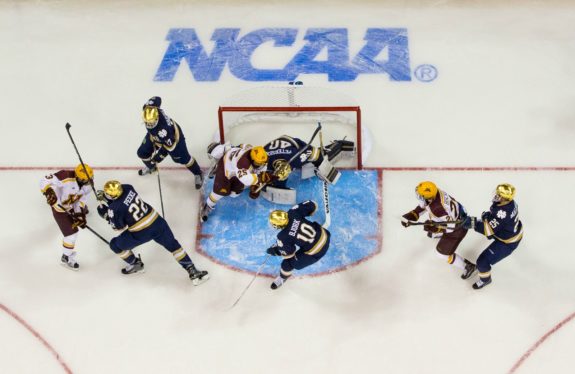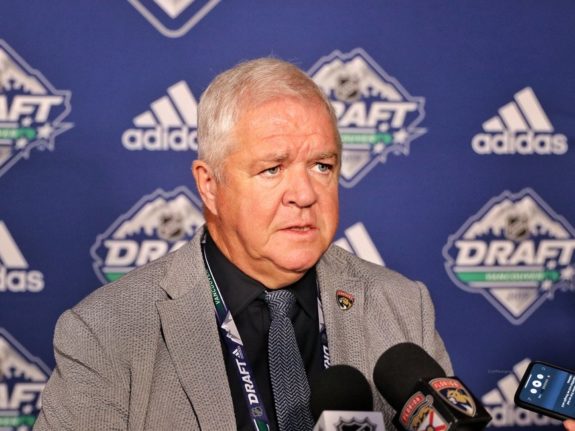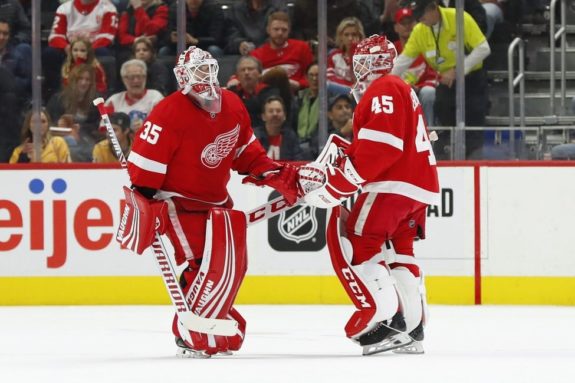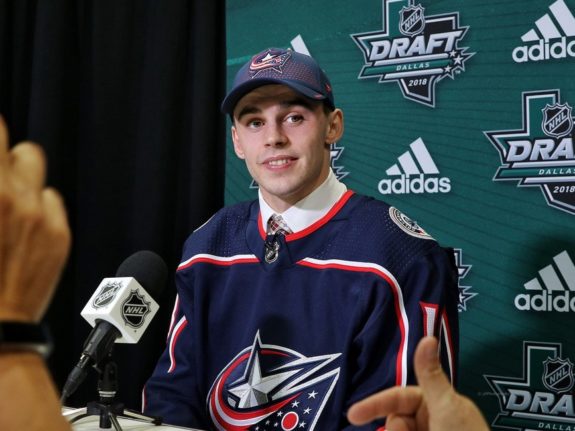Before the NHL Entry Draft and free agent seasons arrive, let’s take a look at some numbers from the NHL/NHLPA Collective Bargaining Agreement (CBA): 90, 50, 23, and 20.
Reserve Lists and Exclusive Signing Rights
Teams are allowed to have up to 90 players on their “reserve list.” That includes players signed to a “standard player contract” (SPC) and unsigned players, including draft picks. With a number of exclusions, a club retains the rights to a drafted player for two seasons after the draft. The details are in the very complex CBA Article 8.6, which include 6 sub-clauses and 15 sub-sub-clauses, and runs to over 2,100 words.

With some exclusions, players drafted by a club whose rights the club retains count toward the 90-player limit. There are lots and lots of little details involved in how long a club retains a player’s exclusive signing rights. For example, the rights to North American players drafted from junior hockey range from one year to four years, depending on whether or not a “bona fide” contract offer — in accordance with the CBA — has been made and whether or not the player remains in junior leagues.
Related: Who is the Leader in Hockey Player Development? – Part 1
Players drafted from colleges and universities fall under a different set of rules and regulations. For example, players drafted at age 18 or 19 who graduate generally must be signed by Aug. 15 following graduation or they become free agents. Players drafted at age 18 or 19 who do not graduate but do leave school fall under a variety of clauses in CBA Article 8.6, depending primarily on when they give notice that they are no longer students. Most of the nine or so variations pivot around Jan. 1 of the fourth year of college eligibility and whether or not a bona fide offer was tendered.

Let’s not forget about players drafted from overseas. First, there’s this thing called an “NHL Transfer Agreement,” which involves the NHL and the overseas league. While the NHL has transfer agreements with the top leagues in Sweden and Finland, there are no such agreements between the NHL and the KHL or the top Swiss league.
Related: Top 10 Best Ice Hockey Leagues
Here’s one of the reasons it makes a difference: clubs that draft players from leagues with an agreement retain the exclusive rights to negotiate a contract with that player for four years (if drafted at age 18 or 19) or two years (drafted at age 20 or older). If there is no transfer agreement between the league from which a player is drafted and the NHL, the drafting team retains exclusive rights indefinitely.
Players Signed to SPCs
Of the 90 allowable players on a reserve list, today teams range from 57 (Los Angeles Kings) to 73 (Florida Panthers), with an average of about 65 players. Only 50 of those 90 players can be signed to SPCs, including players on injured reserve lists. Some of those players will be on the active roster, some on injured reserve, and some on one or two-way contracts in the minors.

Eighteen and 19-year-old players in juniors who have signed contracts but remain with their junior teams do not count against the 50-player limit, unless they have played at least 11 games in the NHL in one season. Remember, too, that signing a player to a contract means, in most cases, that you actually have to pay the player — real dollars out of the team’s vault.
Teams often stay below the 50-contract limit to allow some flexibility for trades (or for financial reasons). If, for example, a club is maxed out at 50 SPCs, a one-for-two player trade involving active players would put the team over the top. Today, only two teams are maxed out at 50 SPCs: the Edmonton Oilers and the Tampa Bay Lightning. About two-thirds of the teams have between 45 and 47 players under contract.
The Active Roster
The 23-player active roster includes only players on SPCs — they count toward the 50-player limit — but this number is a little funny in a couple of ways. While the active roster is limited to 23 players, the club must have a minimum of 24 skaters and three goalies under SPCs. The active roster can change day to day, as long as moves are approved by the league’s Central Registry. Keep in mind that 23 is an upper limit. A club can have as few as 18 skaters and two goalies on the active roster.

Oh, and by the way, this number changes at the trade deadline. After that, the team can add additional players to the active roster, but while the active roster changes, the number of players on the bench during a game does not increase. Any players over the 23-man limit must still fit under the team’s maximum “Actual Club Salary” (the so-called “salary cap”), as specified in CBA Article 50.2 (c). Right now, 13 teams are below the 23-player roster limit, 7 are at the limit, and 11 teams are above the 23-player limit.
One other caveat when it comes to the Active Roster — players signed to “two-way” contacts. When signed to such contracts, players get paid less when in the minors then when they’re called up to the parent club and are on the NHL Active Roster. The paycheck is day-to-day, and includes per diem in accordance with the CBA.
Game Rosters
The number 20 refers to the 18 skaters and 2 goalies who dress for a particular game. Those 20 come from the 23-player active roster and need not be named until a list is submitted to the Official Scorer just before game time. (Ever heard the term “game-time decision?” It’s a real thing.)
While it’s a tremendous luxury to have an overstock of NHL-capable players in your system, especially during an injury-filled season, is that best for the team? A game roster — that 20-player list handed to the Official Scorer — typically includes 12 forwards, 6 defensemen, and a pair of goalies.
If the team is carrying 23 healthy players on the active roster, that puts 3 in the press box, watching, waiting, and learning. And hopefully not stagnating. Indeed, those healthy roster players (and players on IR who can skate) participate in practices, but if the same three are consistently missing actual game time, are they really ready to step in at a moment’s notice and perform at their peak?
Related: Avalanche’s Potentially Historical Season
As the Columbus Blue Jackets saw in their injury-plagued 2019-20 season, sometimes the answer is “Yes.” A number of players who hit the ice for the Blue Jackets this year were regulars for the team’s AHL affiliate, the Cleveland Monsters before being called up. Junior star Liam Foudy shot straight from the OHL to the NHL for a two-game visit (1 assist, 14:13 time on ice). Yet, despite leading the league in man-games lost to injury, Columbus was in a playoff position at the time of The Pause.

Here’s the summary:
- Reserve List: Up to 90 players, both under contract and drafted players yet unsigned.
- Contract Limit: Up to 50 players can be signed to SPCs and these players get paid. The minimum is 24 skaters and 3 goalies.
- Active Roster: Players from whom the game-night schedule can be selected. The maximum is 23 players, but at least 18 skaters and two goalies must be on the list. The Active Roster can change from day to day, as long as the change is filed with (and approved by) the league’s Central Registry. And don’t forget that this list can be expanded at the Trade Deadline.
- Game Roster: The list of 18 skaters and two goalies hand-delivered to the Official Scorer just before the game begins.
Remember that the reserve list and the contract limit are maximums and many teams are below those limits most of the time. The minimum of 18 skaters and 2 goalies for the active roster and the game roster are hard floors — teams can’t be below those numbers.
Some data courtesy of CapFriendly.com.